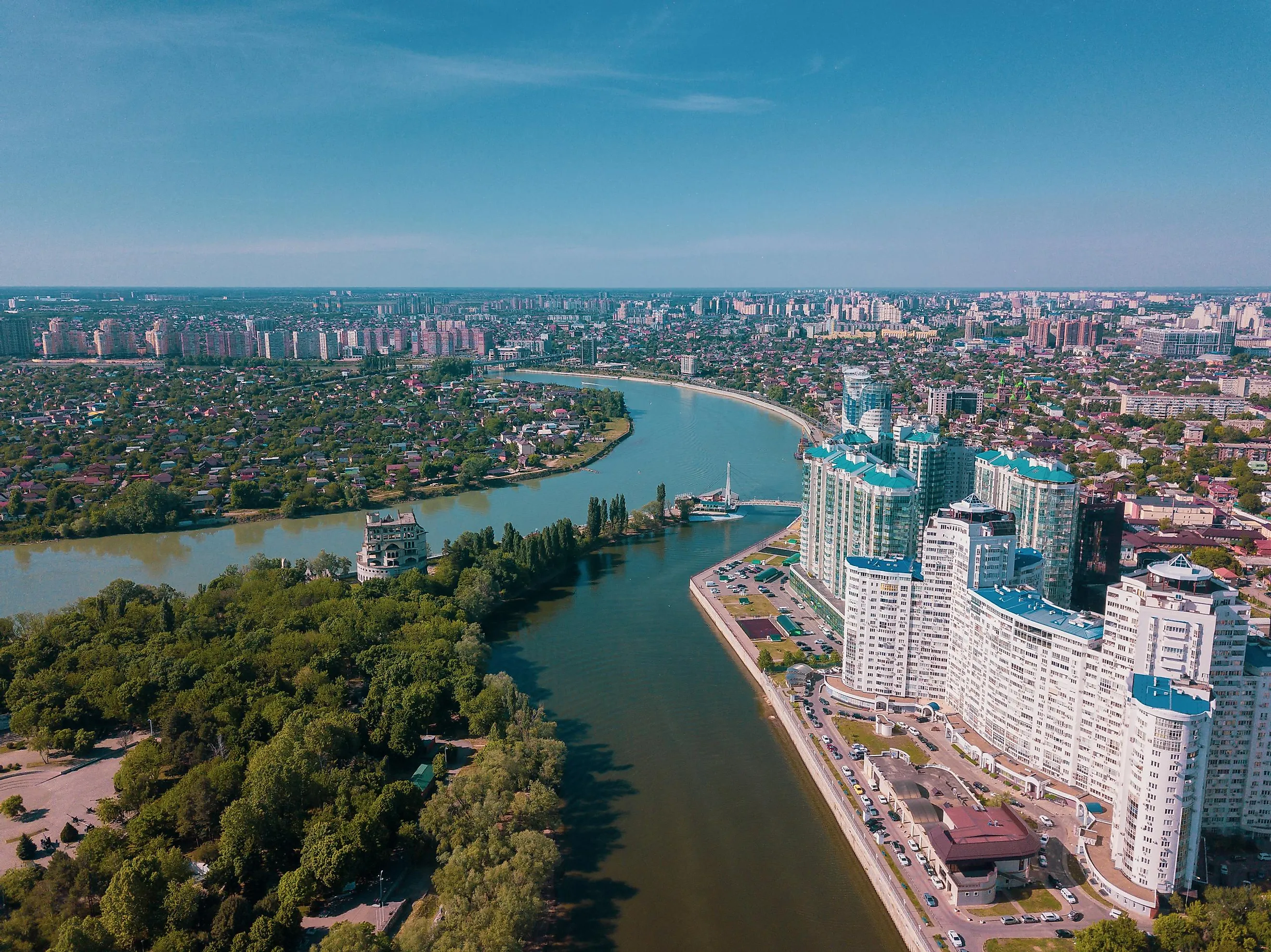
Kuban River
The Kuban River in southwestern Russia flows from the breathtaking heights of the Greater Caucasus Mountains, coursing through Mount Elbrus, embarking on a scenic course. From snow-capped peaks to fertile plains, the river makes its way not just as a geographical feature but serving several communities. It supports agricultural efforts and local economies and connects towns and cities to facilitate transportation. It is a natural splendor that graces the Russian landscape. The significance of the river cannot be undermined as it has helped communities for centuries to flourish. The importance, role, and rich history of this river is a beautiful example of the synergistic relationship between nature and civilization in the northern portion of the Eurasian continent.
Source And Course
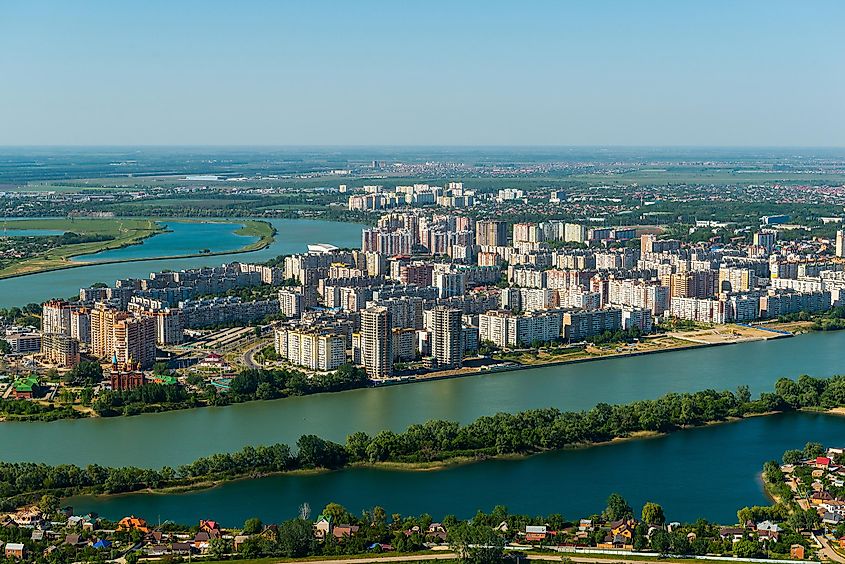
Kuban River in Russia originates in the Greater Caucasus Mountains with its glacier-fed source near Mount Elbrus, the highest peak in the Caucasus and also the highest mountain in Europe. It originates in two outflows, UlluKam and Uchkulan, flowing northward through narrow gorges and rapids. It reaches the Stavropol Upland and then turns westward in a broad marshy floodplain. From the floodplain, it merges into the Sea of Azov, part of the larger Black Sea Basin. As the river flows 540 miles north and west from its source and reaches Temryuk Bay in the Sea of Azov, it goes up to Krasnodar. Major cities along the river are Karachayevsk, Cherkessk, Nevinnomyssk, Armavir, Novokubansk, Kropotkin, Ust-Labinsk, Temryuk, and Krasnodar. The river is a vital resource in the region, providing water for irrigation and serving as a transportation route.
Brief History
Ancient Greeks called the river Hypanis, which later became the Kuban River. Being a historical-geographical region in northwestern Caucasia, the region was part of the North Caucasus Line during the Russian conquest of the Caucasus. In 1860, the Kuban area grew as a political and administrative region after the Black Sea Cossacks united with the eastern regions of Kuban to form the Kuban oblast. In the eighteenth and nineteenth centuries, the native "Kuban Cossacks" occupied the basin. The region on the left bank of the Kuban River or the Transkuban was added to the Kuban oblast. The region went through transitions over the years. After being revamped in the 1920s, today, the Kuban territory equates to the Krasnodar Krai (since 1937) and the Karachai-Cherkess Autonomous oblast on the upper reaches of the Kuban River which was inhabited by the Cherkessian (Circassian) tribes.
Geography
The Kuban River is 563 miles (906 km) long from its source to the delta, draining 23,600 square miles (61,000 square km). Some of its main geographical features include its glacier-fed mountainous origin, fertile plains, valleys, gorges, deltas, and estuaries. The river originates in the major mountain ranges in Eurasia (slopes of Mount Elbrus). The glacier-fed water source adds to the picturesque terrain. It forms into a river at the merging point of its two tributaries (Ullukam and Uchkulam), then flows in a northward direction, winding its way through the rugged terrain of the North Caucasus.
As it descends from the mountains and enters the North Caucasus Plain, the terrain transitions from rugged highlands to fertile lowlands, best for agricultural productivity owing to rich alluvial soils nourished by the river's waters. It continues to flow, passing through valleys and gorges. Once the Kuban River meets the Sea of Azov, it forms a delta and estuary characterized by wetlands and marshes. The Kuban River emptied into the Azov and the Black Seas until the nineteenth century. Later, due to rising grounds, the river began draining into the Azov Sea. Main tributaries flowing into the Kuban flow from the left and originate in the Caucasus Mountains. These tributaries include the Bolshoy Zelenchuk, Maly Zelenchuk, Urup, Laba, Belaya, and Pshish.
Climate And Hydrology
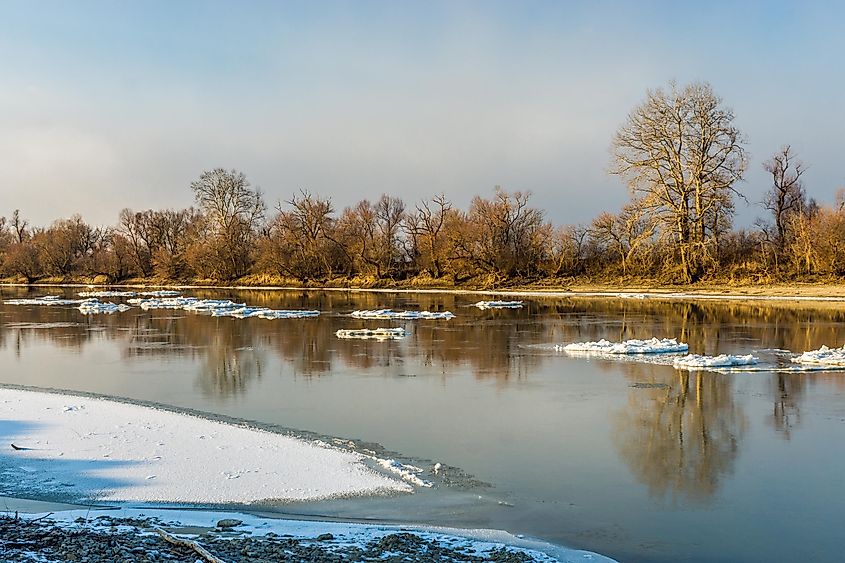
The Kuban lowland region, with the Kuban River as the main river, has a continental climate, more warm and humid, with average temperatures of 10 to 12°C. Characterized by cold winters and hot, long summers, most precipitation occurs from May to July. The summers are best for cultivating subtropical crops such as rice, fruits, and grapes. There are floods that occur throughout the year, with an average of six to seven floods due to rains and thawing of the ice in winters and summers.
The water level changes and goes either up or down by sixteen feet, with the highest levels in July and the lowest levels in February. The water salinity increases in the delta region, varying between 50 and 400 milligrams per liter, and may sometimes go up to 1000 milligrams per liter in certain regions. The average turbidity of the river is 682 grams per cubic meter.
Flora
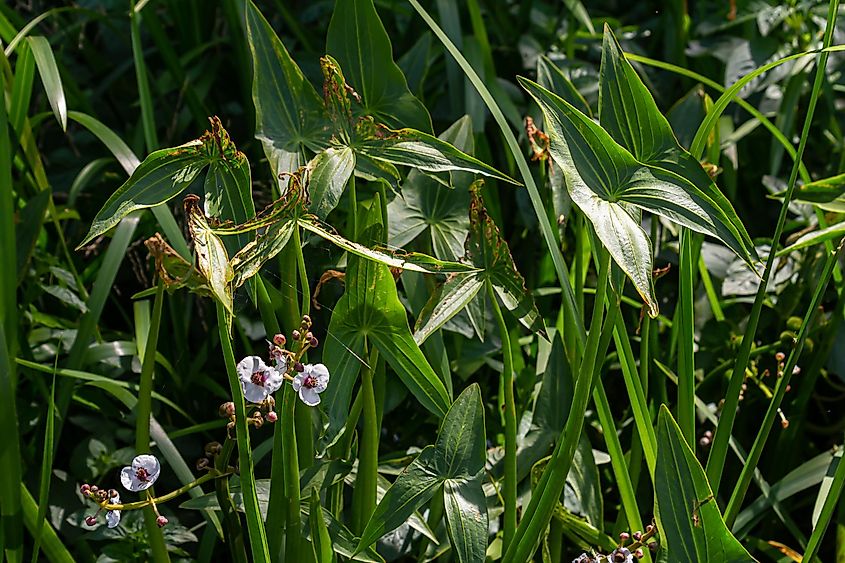
The Kuban River flows through the Caucasus mixed forests in the south, the Crimean Submediterranean forests in the central part, and a Steppe region in the north. In the southern region, the mixed forests include rich tree species. At mid-elevation, the landscape includes trees such as Georgian oak (Quercus iberica), sweet chestnut (Castanea sativa), Oriental beech (Fagus orientalis), hornbeam (Carpinus caucasica). The forests higher up, as well as the Crimean Submediterranean forests, have spruce (Picea orientalis) and fir (Abies nordmanniana) trees. Most of the vegetation at the delta includes grassweeds, sedges, cattails, bur-reed, and bushes of reeds and may also include grass rush, arrowhead, tape-grass, and other water-loving plants. Rich underwater vegetation such as pondweeds, stonewort algae, lilies, lotus, and hornworts grow in the estuary region.
Fauna
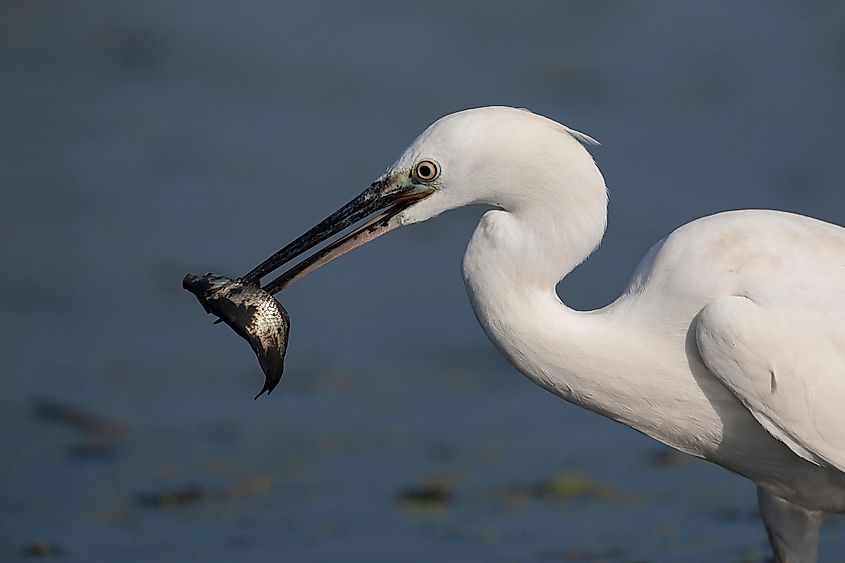
The Kuban delta, with abundant estuaries, has a rich diversity of benthic organisms and plankton. Over 400 zooplankton species dominate the area, including species such as copepods, cladocerans, rotifers, worms, mollusks, and many more such tiny organisms that are excellent food sources for fish. The fish fauna of the Kuban includes over 65 species from different families. Some of the common fish are of the genera Chondrostoma, Squalius, Romanogobio, and Gobio. Other prominent species and genera include carp, roach, bream, pike, perch, ruffe, Chalcalburnus, Sprattus, and Mugil. Newer species found over the last decade are the grass carp and silver carp. The river also has some endemic species, including Kuban barbel (Barbus kubanicus), Kuban long-barbelled gudgeon (R. pentatrichus), Little Kuban gudgeon (Romanogobio parvus), Kuban nase (Chondrostoma kubanicum), Gobio kubanicus, Sabanejewia kubanica, and Oxynoemacheilus merga.
Migratory birds such as waterfowl, including gray herons, swans, pelicans, wild geese, ducks, cormorants, and pelicans, inhabit the Kuban Delta and estuaries. Other abundant bird species are birds of prey such as falcons and other animals, like wild cats and foxes. Muskrats were introduced into the watershed in the twentieth century for commercial fur production.
Significance
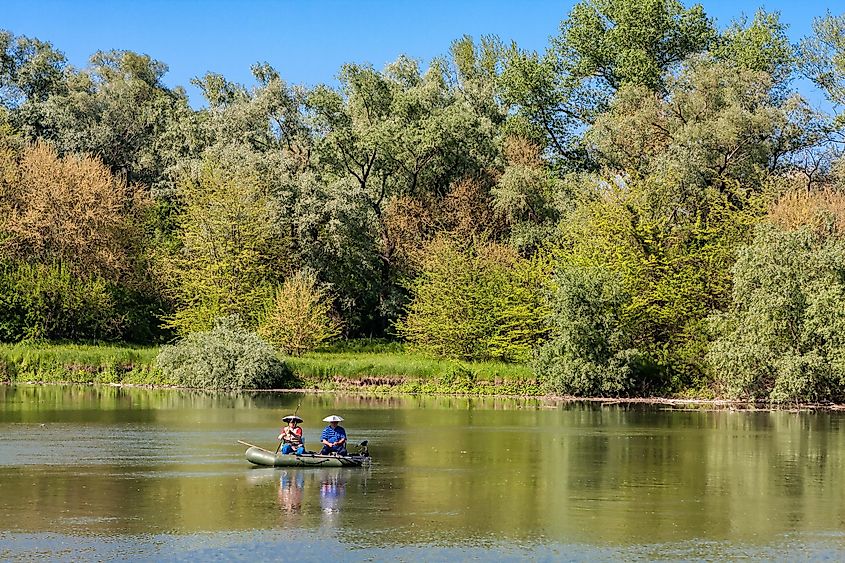
The Kuban River has helped the North Caucasus region, with communities thriving along its banks for centuries, providing its waters for various purposes, from drinking to various other activities. The region supports the economy by giving locals facilities to grow crops. Besides being a famous rice-cultivating region, it supports the cultivation of other grains, vegetables, and fruits. The development of commerce, trade, and transportation has been significant due to the river. There are dams and power stations along the river that provide electricity to the region, for instance, the Krasnodar Thermal Power Plant. The Krasnodar irrigation reservoir also relies on the Kuban River. Wetlands and marshes along the river provide important habitats for diverse wildlife species. Tourism in the regions along the river has also grown over the years, with visitors flocking to scenic points along the river for activities such as fishing, boating, and hiking.
The Kuban River is a vital water source right from the Caucasus Mountains to other areas, including Krasnodar Krai, Karachay–Cherkess Republic, the Republic of Adygea, and all other regions it flows through. The landscape and terrain along the river add to its natural beauty and cultural significance, attracting many tourists to these regions. The Kuban River is not only a lifeline for agriculture, trade, commerce, and transportation but also home to diverse wildlife in these regions.










